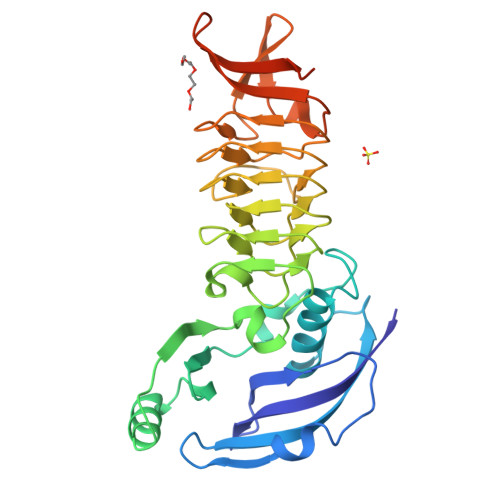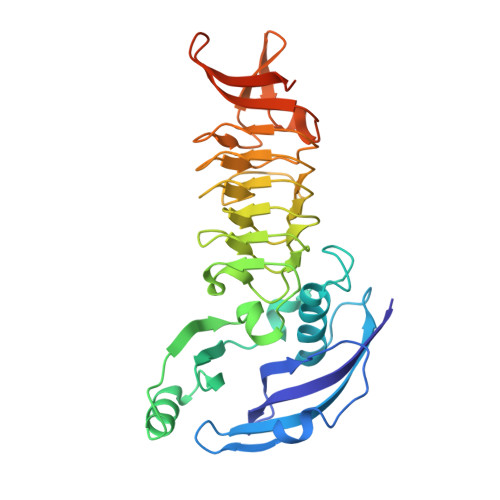Crystal Structure and Biochemical Characterization of Tetrahydrodipicolinate N-Succinyltransferase from Corynebacterium glutamicum.
Sagong, H.Y., Kim, K.J.(2015) J Agric Food Chem 63: 10641-10646
- PubMed: 26602189
- DOI: https://doi.org/10.1021/acs.jafc.5b04785
- Primary Citation of Related Structures:
5E3P, 5E3Q, 5E3R - PubMed Abstract:
Tetrahydrodipicolinate N-succinyltransferase (DapD) is an enzyme involved in the biosynthesis of l-lysine by converting tetrahydrodipicolinate into N-succinyl-l-2-amino-6-oxopimelate, using succinyl-CoA as a cofactor. We determined the crystal structure of DapD from Corynebacterium glutamicum (CgDapD). CgDapD functions as a trimer, and each monomer consists of three domains: an N-terminal helical domain (NTD), a left-handed β-helix (LβH) domain, and a β C-terminal domain (CTD). The mode of cofactor binding to CgDapD, elucidated by determining the structure in complex with succinyl-CoA, reveals that the position of the CTD changes slightly as the cofactor binds to the enzyme. The superposition of this structure with that of Mycobacterium tuberculosis shows differences in residues that make up cofactor-binding sites. Moreover, we determined the structure of CgDapD in complex with the substrate analogue 2-aminopimelate and revealed that the analogue was stabilized by conserved residues. The catalytic and substrate binding sites of CgDapD were confirmed by site-directed mutagenesis experiments.
Organizational Affiliation:
School of Life Sciences, KNU Creative BioResearch Group, Kyungpook National University , Daehak-ro 80, Buk-ku, Daegu 702-701, Korea.




















